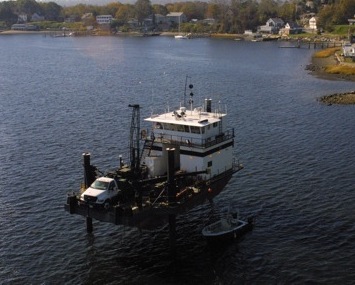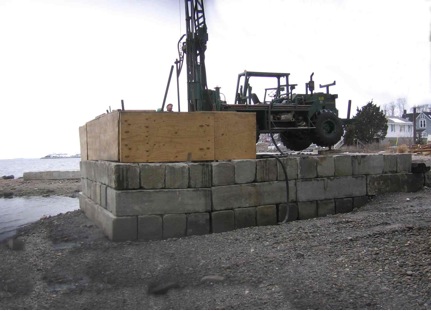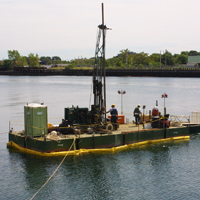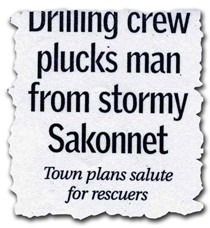CALL GEO: 508-384-4434
Marine Based Drilling

GeoLogic has one of the most extensive, yet safest marine drilling resumes in the New England. Whether drilling to depths nearing 400 feet in high-head artesian conditions, working in strong currents, or in the intertidal zone during winter conditions. Geo has the knowledge and depth of experience to work to success through some of the more difficult conditions Father Neptune cares to provide us. Whether on inland rivers with high current, or exposed ocean fetches. Geo brings the resources to bear to complete projects safely, on time and on budget.
Jack-Up Barge Work in High Current
This photo represents a Jack-Up Barge used by Geo to complete a project in an area of high current where drilling proceeded to near 400 feet beneath mudline. Local topography suggested we may encounter significant artesian conditions requiring use of weighted mud. The next questions were what would the weight and volume of that mud need to be to counteract the artesian pressures. Mud weighting, covered in another section of this site is easily understood with the principles of specific gravity. But putting weighted mud to proper use in a hole of this depth required considerable preparation with slurry tanks, mixing pumps, circulating pumps, viscosifiers, and of course some chemistry given that we were working with salt water. When all was said and done, because all boreholes required telescoping multiple casings, each deep borehole had about 1,200 linear feet of drill casing installed to reach the required depths. All holes were drilled round the clock with overlapping shifts. In all, 10 holes were drilled in about 10 weeks.

Constructed Platform Drilling in the
Intertidal Zone
Depending on the sea state, and bottom conditions, there are two methods we commonly use for drilling in the intertidal zone. The first, used only for shallow work in calm sea conditions is to plan to move specialized equipment into then back out of the intertidal zone.
The second, which we'll cover in more detail is used in the intertidal zone when wave action is strong and hole depth is great enough to require more than one or two work shifts. In the photo shown here, GeoLogic was tasked with drilling boreholes in the 250 to 300 ft. range in an intertidal zone with routine wave heights of 3-6 ft. The water was either too shallow or the bottom too rough for the pads of the jack-up barge, but the bottom conditions and the production requirements simply would not allow moving on and off the hole with the tide changes.
Geo's answer was to haul in about 200 2x2x8ft concrete blocks to make sturdy temporary platforms that could safely withstand the wave energy of the local surf without shifting, all while supporting the drill above the high tide line. When a hole was finished, all blocking was removed and transported to the next location. Half the trick was to properly calculate wind surge into the expected elevation of the highest tides. Intertidal drilling problems solved.
Learn More About Our Marine Based Drilling Experience >
"Geologic and their representatives perform their work in a very professional manner. In addition their work is completed on time in a well coordinated effort considering the environment, neighbors and client."
- RG, Community Relations Manager National Grid


